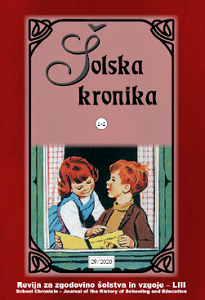Ljubljansko osnovno šolstvo med letoma 1945 in 1965 v luči šolskega prostora in nove arhitekture
Ljubljana primary schooling between 1945 and 1965 in the light of school premises and new architecture
Author(s): David PetelinSubject(s): Education, Architecture, School education, History of Education, WW II and following years (1940 - 1949), Post-War period (1950 - 1989)
Published by: Slovenski šolski muzej
Keywords: schooling; architecture; primary school; Ljubljana; socialism; Emil Navinšek;
Summary/Abstract: The history of obligatory primary schooling in Slovenia is connected not only with the forms of teaching, types of education, legal regulations regarding the implementation of education and the establishment of the state emancipatory and national ideology, but also with the material history reflected in the numerous school buildings. The architectural remnants of former and present school premises in Ljubljana offer us a telling tale about an abundant immovable heritage since school buildings always reflect the contemporary architectural and other social currents, the establishment of new pedagogical approaches and the provision of targeted high quality educational environment. In the first half of the 20th century in Ljubljana we can follow the architectural changes of school buildings from traditionally designed monumental buildings, following the generic and typified ideals of public buildings in Austria-Hungary, down to the modernistic Yugoslav buildings following the model of the new language of functionalism, which particularly after World War Two, in line with the more modern pedagogical guidelines, left us with pavilion-like, corridor-free schools, designed by local architects from the Ljubljana architectural school.
Journal: Šolska kronika: revija za zgodovino šolstva in vzgoje
- Issue Year: 29/2020
- Issue No: 1-2
- Page Range: 158-188
- Page Count: 31
- Language: Slovenian

